Webinar on The New AISI Shear Wall Design Guide – AISI-D113-19
$100.00
Continuing Education Credits Available – 1.5 PDH Credits
The webinar will provide an overview of shear wall design principles as presented in AISI D113-19 including: Load Path; Wind and Seismic Considerations; Type I and II Shear Wall concepts; Shear Wall Deflection. Design examples will also be presented.
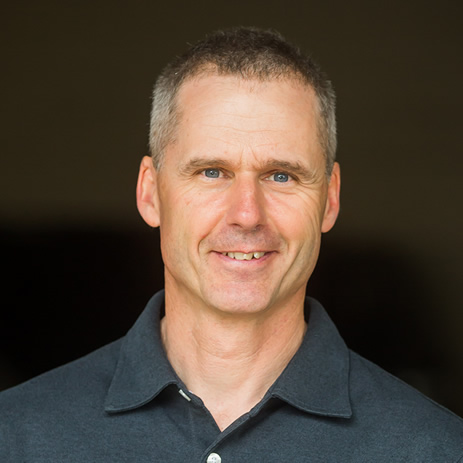
Presenter: Robert L. Madsen, P.E., Devco Engineering, Inc.
Robert Madsen is a Principal with Devco Engineering, Inc. in Enterprise, Oregon where he specializes in the design of cold-formed steel framing. He serves on the American Iron and Steel Institute (AISI) Committee on Specifications (COS) and Committee on Framing Standards (COFS), where he is chairman of the Lateral Subcommittee. He is also chairman of the Technical Review Committee of the Cold-Formed Steel Engineers Institute (CFSEI).
In order to receive credit for this course, you must complete the quiz at the end and pass with at least 80% for a certificate to be generated automatically
Related Products

Webinar on Practical Allyship – 5 Actions Anyone Can Do to Promote Inclusion at Work
Continuing Education Credits Available – 1.5 PDH Credits
Creating an inclusive work environment is not just the “right thing to do.” Inclusive behaviors are tied to higher levels of individual performance and firm profits; yet creating and working in an inclusive work environment often feels elusive, as evidenced by the fact that almost two-thirds of workers are disengaged at work.
In this interactive session, you will learn about the business case for inclusive work cultures and five simple actions anyone can take to create a more inclusive work environment for those they work with, regardless of current role or firm size. Applicable to everyone from new graduates to CEOs, these strategies have been shown to create a more inclusive work environment while requiring little time or budget to implement. When implemented consistently, these strategies create better work cultures for everyone and improve the retention of coworkers in traditionally marginalized gender, racial, and ethnic groups. You will leave this session empowered with specific actions you can immediately apply to engineer inclusion in your everyday interactions.
Presenter: Stephanie Slocum, P.E., Engineers Rising LLC
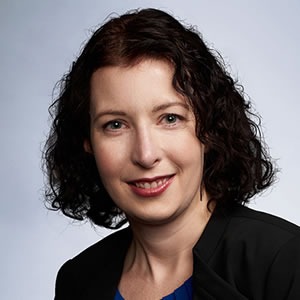 Stephanie Slocum, P.E. is the founder of Engineers Rising LLC and author of “She Engineers: Outsmart Bias, Unlock Your Potential, and Live the Engineering Career of your Dreams.” Stephanie shines light on the barriers to the retention of engineers and provides practical training, inspiration, and mentorship through her online platform and programs. She is a champion of inclusive work cultures.
Stephanie Slocum, P.E. is the founder of Engineers Rising LLC and author of “She Engineers: Outsmart Bias, Unlock Your Potential, and Live the Engineering Career of your Dreams.” Stephanie shines light on the barriers to the retention of engineers and provides practical training, inspiration, and mentorship through her online platform and programs. She is a champion of inclusive work cultures.
Stephanie is the current chair of the Structural Engineering Institute’s (SEI) Business Practices committee. She is currently serving as an elected member of SEI’s Board of Governors and is a member of the American Society of Civil Engineers (ASCE) Task Committee on the Code of Ethics. She is a winner of the 2020 Connected World’s Women in Technology Award for her work empowering women in engineering. Prior to founding Engineers Rising, she worked in structural engineering building consulting for 15 years. She holds bachelor’s and master’s degrees in architectural engineering.
In order to receive credit for this course, you must complete the quiz at the end and pass with at least 80% for a certificate to be generated automatically

Back-to-Basics: Structural vs Nonstructural Members Webinar
Continuing Education Credits Available – 1.5 PDH Credits
The North American Standard for Cold-Formed Steel Framing – Nonstructural Members, AISI S220, has been adopted into IBC 2015. AISI S220 was created to help delineate and eliminate the confusion between the engineering principles and requirements for cold-formed steel structural members and nonstructural members. The webinar will address the basic behavior of composite vs non-composite wall assemblies, as well as design requirements that differ between the structural and nonstructural member.
Presenter: Roger LaBoube, Ph.D., P.E.
Wei-Wen Yu Center for Cold-Formed Steel Structures 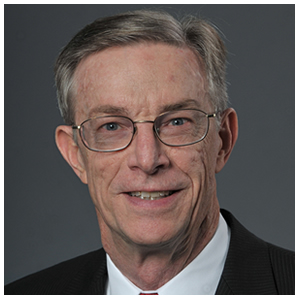
Roger LaBoube, Ph.D., P.E. is Curator’s Distinguished Teaching Professor Emeritus of Civil, Architectural and Environmental Engineering and Director of the Wei-Wen Yu Center for Cold-Formed Steel Structures at the Missouri University of Science & Technology (formerly University of Missouri-Rolla). Dr. LaBoube holds B.S., M.S., and Ph.D. degrees in Civil Engineering from the University of Missouri-Rolla. Dr. LaBoube has an extensive background in the design and behavior of cold-formed steel structures. His research and design activities have touched on many facets of cold-formed steel construction including cold-formed steel beams, panels, trusses, headers, and wall studs as well as bolt, weld, and screw connections. He is active in several professional organizations and societies, including membership on the American Iron and Steel Institute’s Committee on Specifications for the Design of Cold-Formed Steel Structural Members and chairman of the AISI Committee on Framing Standards. He is a registered Professional Engineer in Missouri.
In order to receive credit for this course, you must complete the quiz at the end and pass with at least 80% for a certificate to be generated automatically

Webinar on Cold-Formed Steel Curtain Wall Design
Continuing Education Credits Available – 1.5 PDH Credits
Curtain walls with various types of cladding are commonly used for many modern structures and are often framed with cold-formed steel. Curtain walls are typically attached to the main building frame and therefore must be designed to accommodate deflections of the structural frame and also designed to transfer wind and seismic forces to the structure. This webinar will cover many of the topics a designer will need for a complete cold-formed steel curtain wall design. The information presented will be based upon AISI S100, North American Specification for the Design of Cold-Formed Steel Structural Members, AISI S211, North American Standard for Cold-Formed Steel Framing – Wall Stud Design and various CFSEI Technical Notes. Some specific topics covered will include stud design, top track design, design of openings, bridging and various additional miscellaneous topics. Example calculations will also be provided covering studs, top track, connections and openings.
Presenter: Sutton Stephens, P.E., S.E., Ph.D.
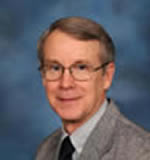
Sutton Stephens, P.E., S.E., Ph.D. has experience in the structural engineering field and in education. He has worked for consulting engineering firms in Washington and Montana and taught structural engineering courses at Kansas State University in the Architectural Engineering Department. In addition to the design of cold-formed steel structures, he has authored or co-authored a number of research papers covering various topics in cold-formed steel. He has served in the AISI Committee on Framing Standards (COFS) and chaired the Prescriptive Methods sub-committee. He also served on the CFSEI Executive Committee for two terms.
In order to receive credit for this course, you must complete the quiz at the end and pass with at least 80% for a certificate to be generated automatically

Webinar on the Wonderful World of Buckling
Continuing Education Credits Available – 1.5 PDH Credits
A thin compression element of a cold-formed steel member – such as a flange or a web — may buckle before it reaches its yield stress. Thus, cold-formed steel design involves estimating the influence such buckling has on the strength of a beam or column.
What are these buckling conditions? How do they differ in their behavior? This webinar will explore the basic buckling behaviors encountered as one designs a cold-formed steel beam or column. Emphasis will be placed on the fundamental behavior and highlight the design expressions that enable an engineer to estimate buckling strength.
Join Roger LaBoube, Ph.D., P.E., on this journey through the wonderful world of buckling.
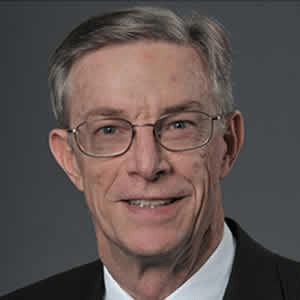 Presenter: Roger LaBoube, Ph.D., P.E., Cold-Formed Steel Engineers Institute
Presenter: Roger LaBoube, Ph.D., P.E., Cold-Formed Steel Engineers Institute
Dr. Roger A. LaBoube is Curator’s Distinguished Teaching Professor Emeritus of Civil, Architectural and Environmental Engineering and former director of the Wei-Wen Yu Center for Cold-Formed Steel Structures at the Missouri University of Science & Technology. Dr. LaBoube holds B.S., M.S., and Ph.D. degrees in Civil Engineering from the University of Missouri-Rolla. He has an extensive background in the design and behavior of cold-formed steel structures. His research and design activities have touched on many facets of cold-formed steel construction, including cold-formed steel beams, panels, trusses, headers, and wall studs as well as bolt, weld, and screw connections. Dr. LaBoube is active in several professional organizations and societies. He serves as chairman of the American Iron and Steel Institute (AISI) Committee on Framing Standards and is an emeritus member of the AISI Committee on Specifications for the Design of Cold-Formed Steel Structural Members. He is a registered professional engineer in Missouri.
In order to receive credit for this course, you must complete the quiz at the end and pass with at least 80% for a certificate to be generated automatically
Price: $100

Webinar on Roles and Responsibilities for Success with Cold-Formed Steel Framing
The webinar will be presented as a panel interactive session, with Jeffrey Klaiman, P.E., principal in charge of structural engineering at ADTEK Engineers, Inc. as the lead presenter. Panelists will include Don Allen, P.E., director of engineering at Super Stud Building Products, Inc.; Kenneth Pagano, P.E., cold-formed steel truss design engineer at Scosta Corporation; and Patrick W. Ford, P.E., senior project manager at raSmith. The webinar will: Introduce AISI S202, Code of Standard Practice for Cold-Formed Steel Structural Framing and describe how this standard was developed and is maintained. Describe the roles of various individuals and entities in a cold-formed steel framing project. Identify new items and changes in the 2020 edition of the Code of Standard Practice. Provide examples of items in the Code of Standard Practice and how they can be used in actual projects. Include a panel discussion with the authors and users of the standard.
Presenters
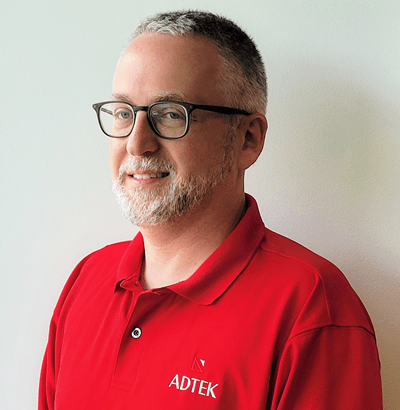
Jeffrey Klaiman, P.E.
ADTEK Engineers, Inc.
Jeff has almost 30 years of experience in the construction industry. His responsibilities include building maintenance and engineering; on-site engineering for a concrete contractor; Manager of Technical Services and Versa-Truss Product Manager for Dale/Incor (national manufacturer of cold-formed steel framing products and systems), participation on the American Iron and Steel Institute’s Committee on Specifications for the Design of CFS Structural Members and Committee on Framing Standards; a member of CFSEI for more than 15 years; ASTM International and the SFA. Mr. Klaiman serves as chairman of the Standard Practices Subcommittee of the AISI Committee on Framing Standards, chairman of the SFIA Technical Committee, and is also the president of MASFA. He is a past president of CFSEI. In his position at ADTEK Engineers, Inc. as Principal in Charge of Structural Engineering, Mr. Klaiman oversees the design and coordination of all cold-formed steel design documents. He also manages in-house staff in four offices for general structural and CFS framing design, develops project schedules, and coordinates quality control reviews with project managers on his team. Mr. Klaiman holds a bachelor’s degree in Civil Engineering from the University of Michigan, and an MBA from Eastern Michigan University.
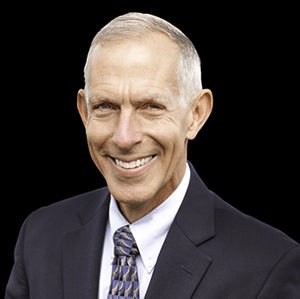
Don Allen, P.E., S.E., LEED AP
Super Stud Building Products
Don Allen, P.E., S.E., LEED AP, is an internationally known expert in cold-formed steel design, and currently serves as director of engineering for Super Stud Building Products. He chairs the AISI Education Committee, is actively involved in the development of ASTM and AISI standards, and has designed projects in Europe, Africa and North America. In addition to working for steel product manufacturers, Don has spent more than a decade in private practice and served over nine years as technical director for the Steel Stud Manufacturers Association (SSMA), the Steel Framing Alliance (SFA) and the Cold-Formed Steel Engineers Institute (CFSEI). At Super Stud, Don is actively involved in product development for multiple product lines including steel framing, MgO structural floor sheathing, steel structural wall panels, exterior insulation and finish systems (EIFS), and steel doors.
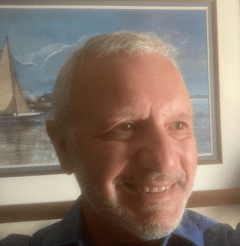
Kenneth (Kenny) J. Pagano, P.E.
Scosta Corporation
Kenneth (Kenny) J. Pagano, P.E. is the cold-formed steel truss design engineer for Scosta Corporation headquartered in Sebring, FL. Kenny also serves on the AISI Committee on Framing Standard’s main Committee as well as the Framing and Standard Practices Sub-Committees. Kenny maintains an office outside of Palatka, FL where he is an Adjunct Professor for the Engineering Technology department at the local college – St Johns River State College.
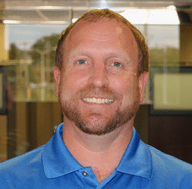
Patrick M. Hainault, P.E.
raSmith
Patrick M. Hainault, P.E. is the cold-formed group leader at raSmith in Brookfield, Wisconsin. His experience includes engineering design and staff management with raSmith and Matsen Ford Design Associates, Inc., where he was a principal and senior engineer for 21 years. His expertise includes application of the latest technologies and design concepts to a wide variety of primary and secondary structures, including prefabricated systems. In addition to specialty expertise in cold-formed steel, his engineering systems design experience includes structural steel, reinforced concrete, engineered masonry and wood. He was a structural designer for a concrete reinforcement supplier and a technician for a national material-testing firm. Patrick is a member of the SFIA Technical Committee and the AWCI Construction Technology Committee. He is a registered Professional Engineer in Wisconsin and several other states. He earned his Bachelor of Science degree in Civil Engineering from Marquette University.
In order to receive credit for this course, you must complete the quiz at the end and pass with at least 80% for a certificate to be generated automatically

Webinar on Cold-Formed Steel Classroom: Impact of the 2018 IBC
Continuing Education Credits Available – 1.5 PDH Credits
The American Iron and Steel Institute’s Committee on Framing Standards has developed 2015 editions of the suite of cold-formed steel framing design standards (S220-15, S240-15, S400-15) and the Committee on Specifications has developed S310-15 for diaphragm design, as well as a 2016 edition of the North American Specification (S100-16). This presentation will discuss the scope and some of the changes to these design standards. Specific reference will be provided to clarify adoption of the standards in the 2018 International Building Code.
The presentation will highlight available design aids provided by AISI such as AISI D110-16, Cold-Formed Steel Framing Design Guide, which has been updated to reflect the design requirements of AISI S100-2012 and AISI S240-2015. Another excellent source for design examples is the Cold-Formed Steel Engineers Institute Tech Notes which will also be addressed by the presentation. Also, an overview of the soon to be published AISI D113 Cold-Formed Shear Wall Design Guide will be provided.
 Presenter: Roger LaBoube, Ph.D., P.E.
Presenter: Roger LaBoube, Ph.D., P.E.
Wei-Wen Yu Center for Cold-Formed Steel Structures
Roger LaBoube, Ph.D., P.E. is Curator’s Distinguished Teaching Professor Emeritus of Civil, Architectural and Environmental Engineering and Director of the Wei-Wen Yu Center for Cold-Formed Steel Structures at the Missouri University of Science & Technology (formerly University of Missouri-Rolla). Dr. LaBoube holds B.S., M.S., and Ph.D. degrees in Civil Engineering from the University of Missouri-Rolla. Dr. LaBoube has an extensive background in the design and behavior of cold-formed steel structures. His research and design activities have touched on many facets of cold-formed steel construction including cold-formed steel beams, panels, trusses, headers, and wall studs as well as bolt, weld, and screw connections. He is active in several professional organizations and societies, including membership on the American Iron and Steel Institute’s Committee on Specifications for the Design of Cold-Formed Steel Structural Members and chairman of the AISI Committee on Framing Standards. He is a registered Professional Engineer in Missouri.
In order to receive credit for this course, you must complete the quiz at the end and pass with at least 80% for a certificate to be generated automatically

Webinar on Fire and Cold-Formed Steel Design
Continuing Education Credits Available – 1.5 PDH Credits
Fire Resistance of Wall, Floor & Ceiling Systems
The presentation will begin with a review of the standards used to test both wall and floor/ceiling assemblies. Special attention will be given to factors that affect the design of systems with cold-formed steel, and some comparisons will be made to wood-framed systems. Several UL-certified fire designs will be described that showcase how structural factors can affect fire design.
Presenter: Kyle Flondor, United States Gypsum Corporation.
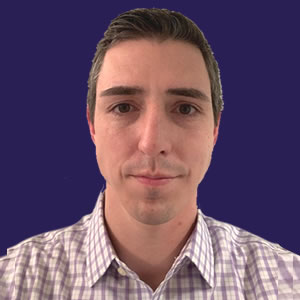 Kyle Flonder is a Senior Researcher, Building Science (Fire) at United States Gypsum Corporation. He received his Bachelor of Science degree in Industrial Engineering from the University of Iowa. From 2006-2017, he was project engineer in UL’s Fire Protection Division, responsible for the evaluation and certification of fire containment and building fenestration products. He moved to USG in 2017 to support the evaluation of USG products and systems through testing and analysis. He is one of the principal USG engineers who work with accredited testing agencies, and he assists most Authorities Having Jurisdiction with large and small projects involving USG products and fire designs.
Kyle Flonder is a Senior Researcher, Building Science (Fire) at United States Gypsum Corporation. He received his Bachelor of Science degree in Industrial Engineering from the University of Iowa. From 2006-2017, he was project engineer in UL’s Fire Protection Division, responsible for the evaluation and certification of fire containment and building fenestration products. He moved to USG in 2017 to support the evaluation of USG products and systems through testing and analysis. He is one of the principal USG engineers who work with accredited testing agencies, and he assists most Authorities Having Jurisdiction with large and small projects involving USG products and fire designs.
In order to receive credit for this course, you must complete the quiz at the end and pass with at least 80% for a certificate to be generated automatically

Webinar on Design Considerations for Cold-Formed Steel Light Frame Diaphragms
Continuing Education Credits Available – 1.5 PDH Credits
This webinar will cover the basic design of cold-formed steel light frame diaphragms as envisioned in the provisions articulated in AISI S100-16, North American Specification for the Design of Cold-Formed Steel Structural Members, 2016 Edition; AISI S230-19, North American Standard for Cold-Formed Steel Framing―Prescriptive Method for One- and Two-Family Dwellings, 2019 Edition; AISI S400-15 w/S1-16, North American Standard for Seismic Design of Cold-Formed Steel Structural Systems, 2015 Edition with Supplement 1; and AISI S240-15, North American Standard for Cold-Formed Steel Structural Framing, 2015 Edition. Design practice documents derived from these AISI Standards will also be addressed. At the conclusion of this webinar, design professionals will have a better understanding of current provisions that support engineered design (strength and deflection) of conventional codebased light frame cold-formed steel diaphragms as well as the limitations of these provisions.
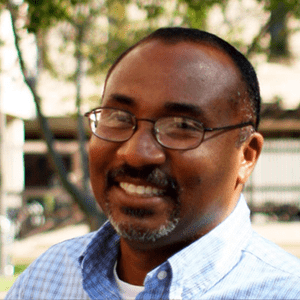
Presenter: Reynald Serrette, Ph.D.,
Santa Clara University
Reynaud Serrette, Ph.D. is a professor in the Department of Civil, Environmental and Sustainable Engineering at Santa Clara University in Santa Clara, California. He has been involved in cold-formed steel research and design since 1987.
In order to receive credit for this course, you must complete the quiz at the end and pass with at least 80% for a certificate to be generated automatically

